- Author: Kathy Keatley Garvey
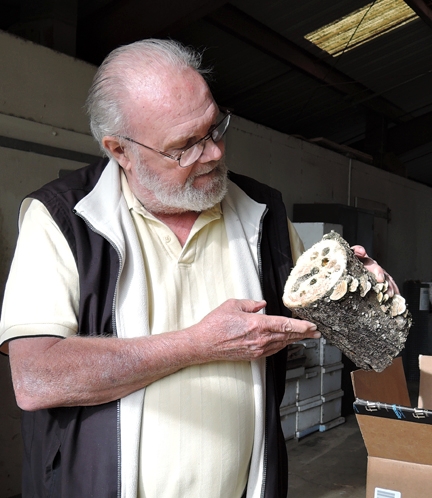
Gold?
When a rotten apple tree was cut down last week on private property in Davis, scores of eyes peered from the drilled holes. Soon, adult male Valley carpenter bees (Xylocopa varipuncta)--those green-eyed golden bees known as "teddy bears"--emerged with their female counterparts. The males and females look nothing alike; the females are solid black.
As entomologists know, the females drill holes in wood to lay their eggs. When the adult females and males emerge from their cells, they "wait it out" until spring or when the weather warms enough for them to take flight. It gets pretty cold in Davis.

Talented insect photographer Allan Jones of Davis got the carpenter-bee call. "My good friend's son, a football player up from Claremont, cut down the rotten apple tree," Jones said. Surprise! Insects began crawling from the drilled holes.
Jones knew immediately what they were. He's photographed hundreds of them. He picked up the golden bees, knowing that "boy bees can't sting" and delivered them to native pollinator specialist Robbin Thorp, emeritus professor of entomology at UC Davis.
"The golden boys were all clinging together in a little ball when I left (the Laidlaw facility)," Jones said.
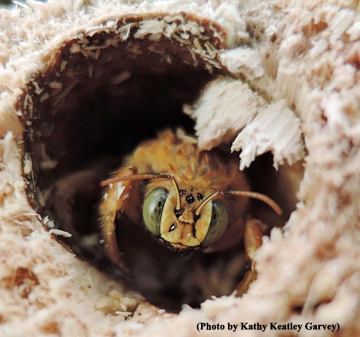
Thorp plans to keep them chilled to see if they survive the winter. They also will be part of "show and tell" at the Bohart Museum of Entomology's open house from 1 to 4 p.m., Sunday, Jan. 11 in Room 1124 of the Academic Surge Building on Crocker Lane.
The male Valley carpenter bees are often mistaken for a new species of bumble bee. In fact, some refer to them as "golden bumble bees."
The Valley carpenter bees are the largest carpenter bee in California. They are included in the newly published California Bees and Blooms: A Guide for Gardeners and Naturalists, co-authored by entomologist Gordon Frankie of UC Berkeley, Thorp, entomologist-photographer Rollin Coville and UC Berkeley botanist and curator Barbara Ertter.
Xylocopa varipuncta inhabits the Central Valley, Santa Clara Valley, and Southern California. At many garden events, visitors are surprised when Thorp picks up a male Valley carpenter bee and lets them hold it and feel the vibrating buzz.
"Boy bees can't sting," he tells them. "They're bluffing."
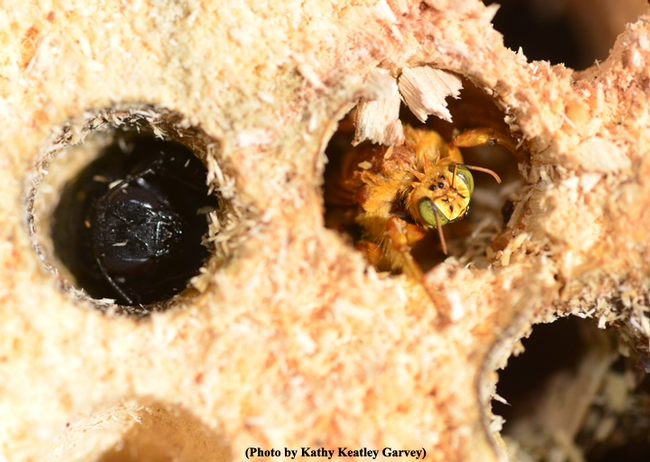
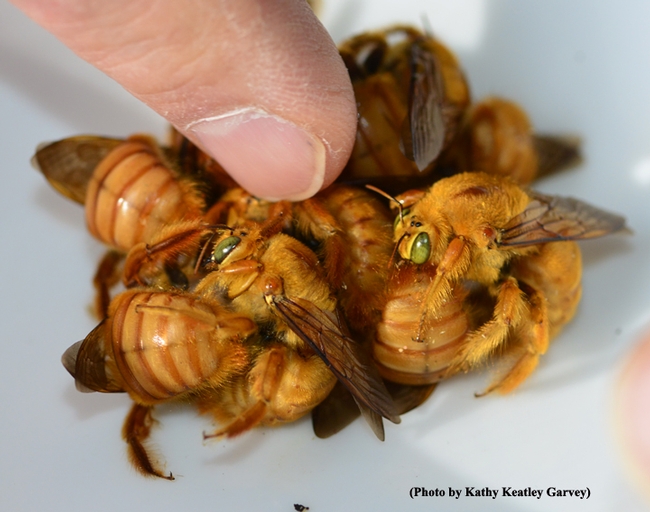
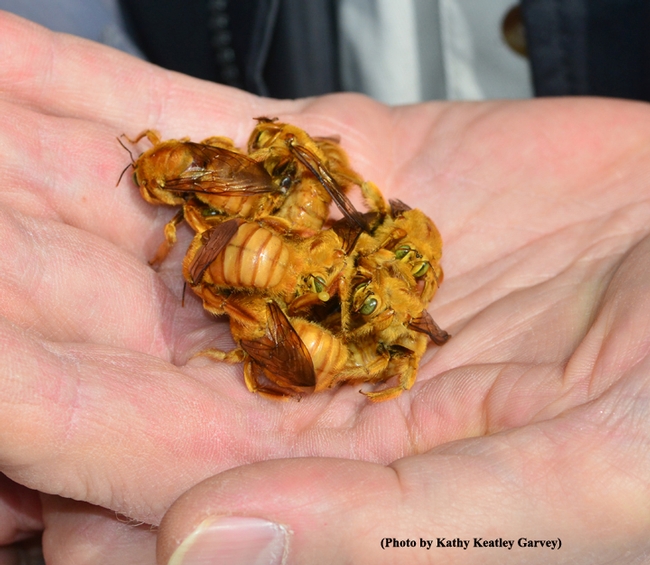
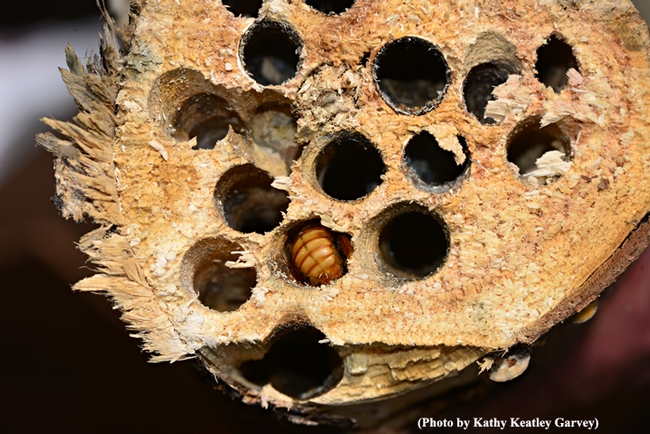



Thanks.
However, you want to encourage them to leave: Robbin Thorp, UC Davis distinguished emeritus professor of entomology, says:
"If you are set on encouraging them to leave, you could try encasing the entrances with cones of wire mesh to make it difficult for them to find the entrance hole. Painting the ends of the dead branches will make them less attractive for the bees to initiate new nests.
"If there are baby carpenter bees in the nest tunnels, they will continue to emerge over time.
"Also prune out the dead apple branches. However, a rotting apple tree is an ideal nesting habitat attractive to carpenter bees."